Dried beans are a truly versatile kitchen staple that everyone should have in their pantry. Not only do they keep pretty much indefinitely, but they’re actually extremely easy to cook and customise to create super tasty, inexpensive meals.
Photos by Claire Lower
The thing that usually puts people off dried beans is the soaking. Soaking beans before cooking is recommended to remove some of the sugars responsible for beans’ infamous digestive issues, and it’s also said to reduce cooking times.
It’s not the act of putting beans in a bowl and covering them with water that’s the hard part, but remembering to do it the night before you want to cook them.
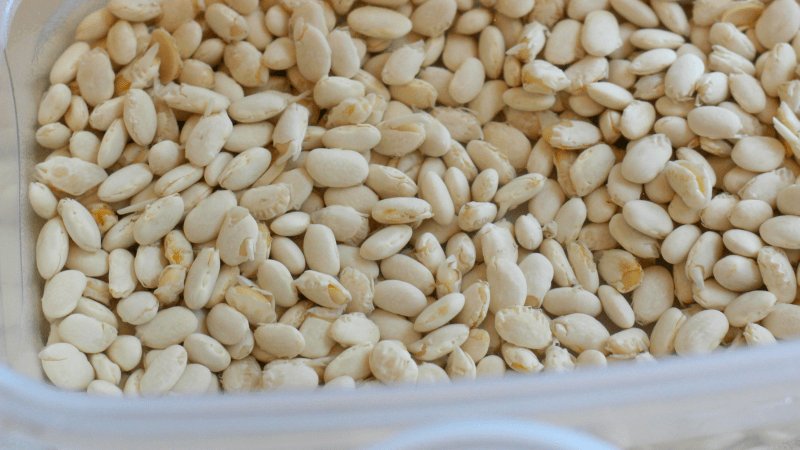
Does this mean that the more forgetful among us must resign ourselves to a life of eating canned beans? No. As with anything, there are ways around this problem, which we will get to in a moment.
What Does Soaking Do?
Besides time management, there is also that delicate matter of digestion. Though conventional wisdom suggests soaking your beans for a long period of time not only speeds up the cooking process, but helps reduce gas, most of the data supporting this is anecdotal.
However, if you’ve noticed that soaking your beans for a long period of time helps to stave off tummy trouble, then soak away my friend.
But if you’re in camp “soaking doesn’t help with gas anyway” — both myself and Kenji Jopez-Alt are members — then the only thing you have to worry about is flavour and texture. To see how soaking affected these things, I soaked some white beans for three different lengths of time:
- The Full Soak: This is for the responsible adults who have it together, and can remember to soak their beans the night before. Simply rinse your desired amount of beans, then soak them in water for six-eight hours, using a ratio of three cups of water for every cup of beans. (This soaking time applies to heartier beans like white beans, chickpeas, kidney beans, etc. Some, more delicate legumes such as lentils can be soaked for merely an hour. This chart can break it down for you.)
- The Quick Soak: This is for the home cook who knows they want beans at least a couple of hours before they plan to eat them. Rinse your desired amount of beans, then add them to a pot of water, using a ratio of three cups of water for every cup of beans. Bring the beans to a boil, let them cook for two minutes, then cover the pot, remove it from the heat and let it hang out for an hour.
- The No-Soak: You don’t soak the beans at all, just rinse them.
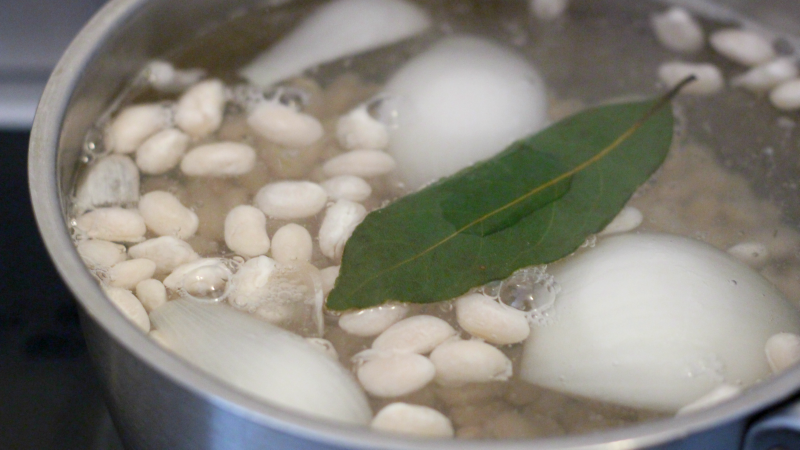
Get Cookin’
I then cooked five batches of beans: three on the stovetop, one (unsoaked batch) in the pressure cooker and one (unsoaked batch) using a stove-to-oven method, which we will cover in a bit.
Simmer Down Now
No matter how long you soak ’em, cooking beans on the stovetop is very easy. After the soaking time (or no time at all) has elapsed, simply drain them, rinse them again, and put them in a pot with some aromatics (bay leaf, onion, garlic, maybe a ham bone), the same amount of water you used for soaking, and 1/4 teaspoon of salt for every cup of beans.
Bring everything to a boil, then reduce to a simmer, and cook until you reach your desired level of tenderness. (The bag you bought your beans in should give you suggested cooking times, and this chart is pretty helpful too.)
Once the beans were cooked, I gave them a taste. They were virtually indistinguishable. All three batches — including the beans that were not soaked at all — were tender, well-flavored, and fully cooked.
They also reached my preferred level of doneness (very soft) in the same amount of time (about an hour and 15 minutes), so that extra time in room temperature water didn’t actually speed anything up. The beans were, however, a little roughed up, and didn’t hold their shape super well. (I’m OK with this.)
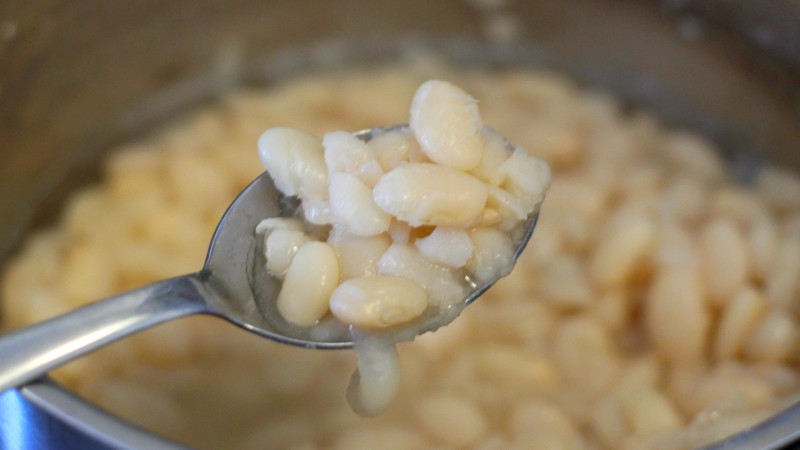
Under Pressure
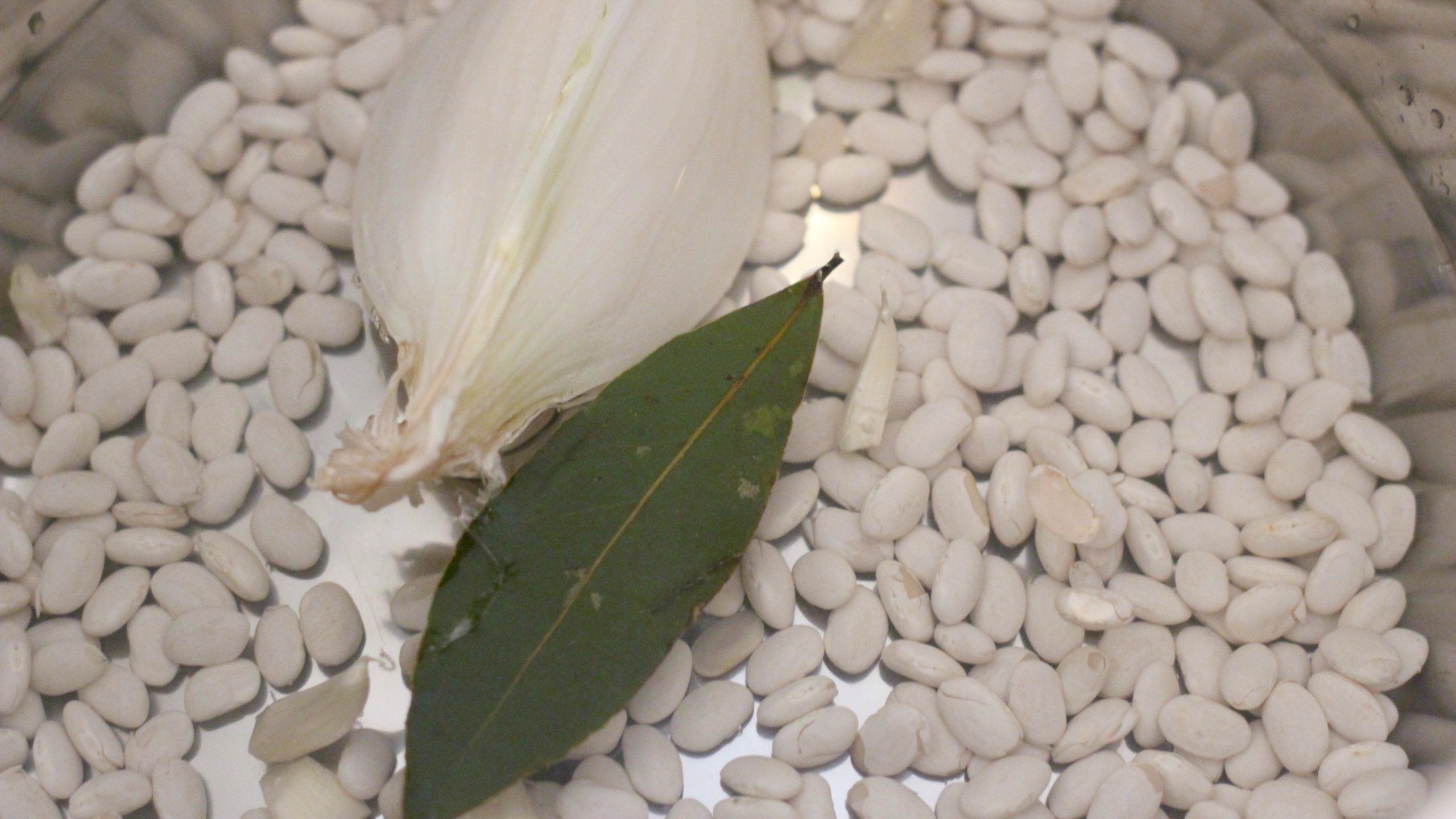
Like stovetop cooking, pressure cooking is extremely easy. Once again you’ll rinse your beans and, using a ratio of 3 cups of water for every cup of beans, add them to your pressure cooker, along with your desired aromatics. The amount of time you cook will vary from legume to legume.
This chart breaks it down for stove-top pressure cookers and, for those of you with an Instant Pot, this PDF will prove to be very helpful. In terms of texture, the no-rinse, pressure-cooked legumes were firmer and more toothsome, but still completely edible.
In fact, some of you may prefer this texture, I enjoy a very soft, almost creamy bean, but the no-soak pressure cooked beans actually hold their shape a little better.
Low and (Not That) Slow
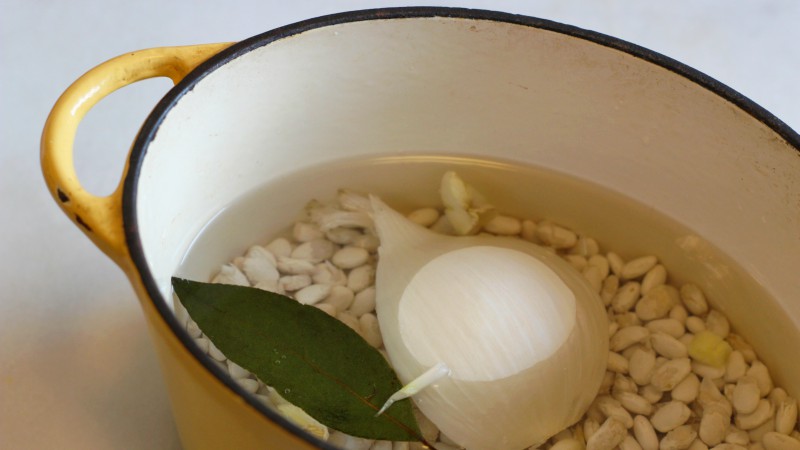
Finally, I tried this 90-minute no-soak method form the Paupered Chef. Using the same water ratios and seasonings as I did for all other batches, I dumped everything into a small Dutch oven, brought it to a boil, then covered the pot and place it in a 120°C oven for an hour and 15 minutes.
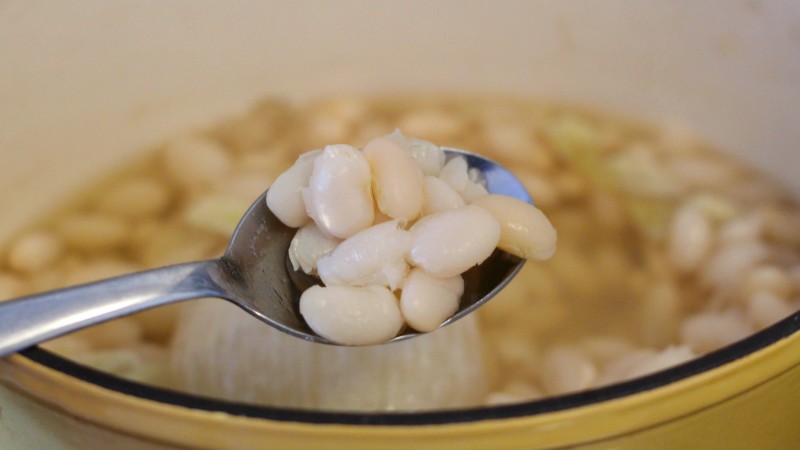
As you can see from the above photo, these beans kept it together quite well. They were just as flavorful as any other batch, and they had a texture that was somewhere in between the pressure-cooked and stovetop-prepared batches. In fact, some might go so far as to call them “perfect” as they were nice and creamy on the inside while still offering the smallest amount of resistance when bitten into.
However you choose to prepare your beans is up to you, but know that you don’t have to pre-soak them for them to turn out ok or, in the case of that last method, pretty freaking perfect. Once your beans are cooked, you can use them exactly as you would canned and add them to soups, chilli, stews, or just eat them on their own.
In the case of white beans, I like to drizzle on a little olive oil and grate on some lemon zest, or toss ’em in the food processor with a lot of garlic to make a white bean dip. (Use honey-fermented garlic for something truly special.)
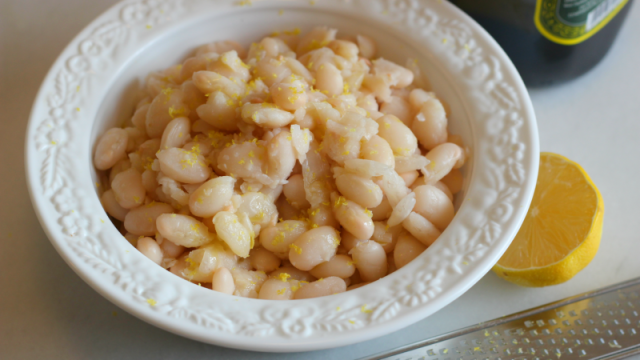
Comments